Error “Failed to play test tone” could be caused by corrupted audio drivers, sound configurations, and corrupted Windows files. In this article, you’ll find the solutions to solve this problem. If you run into this error while testing sound, try the solutions below. All solutions apply to Windows 11, 10, 7 & 8.1.
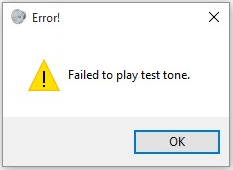
Solution 1: Restart Windows Audio Service
Sometimes a simply restart of the Windows audio service would do wonders for the Failed to play test tone error. To see if this works for you:
- On your keyboard, press the Windows logo and R key at the same time. Type services.msc into the run box and click the OK button.
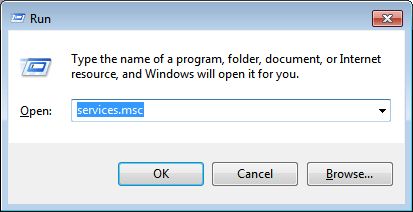
- Right-click on Windows Audio and select Restart from the pop-up menu. Then the audio service will restart.
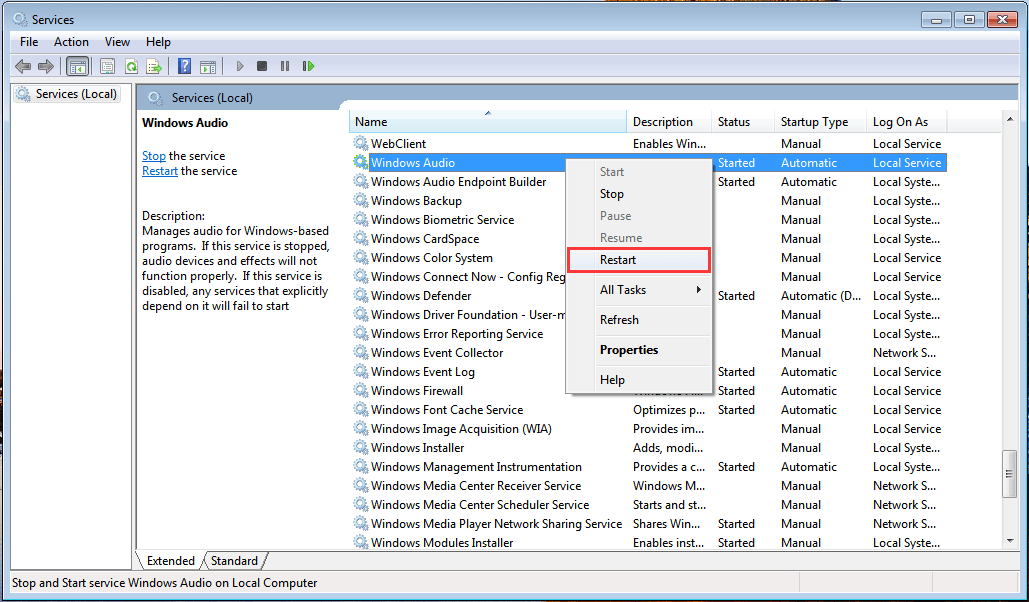
- Check to see if the problem is resolved. If the Failed to play test tone error remains, please move on.
Solution 2: Change the Audio Service Log-On Settings
The log on settings of audio service will decide which user account is used by the service to operate and reflect how the service is running. You could try tweaking the settings to see if that helps.
- On your keyboard, press the Windows logo and R key at the same time. Type services.msc into the run box and click the OK button.

- Right-click Windows Audio and select Properties.

- Select the Log On tab. Then choose This account. See if the account and password are automatically filled. If not, enter Local Service for this account, set up a new password, confirm it and click OK.

- If the Failed to play test tone error remains, please move on.
Solution 3: Repair Corrupted Windows Files
The problem would be caused if some important Windows files are corrupted. To check and repair the corrupted system files, follow these steps:
- On your keyboard, press the Windows Logo key
 , type in command prompt, and select Run as administrator. (If Windows prompts for permission, click OK to continue.)
, type in command prompt, and select Run as administrator. (If Windows prompts for permission, click OK to continue.)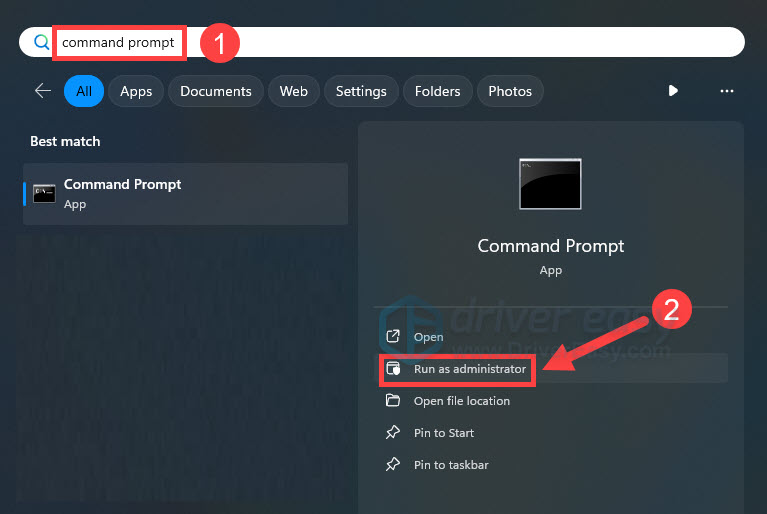
- Type in SFC /Scannow, and then press Enter.
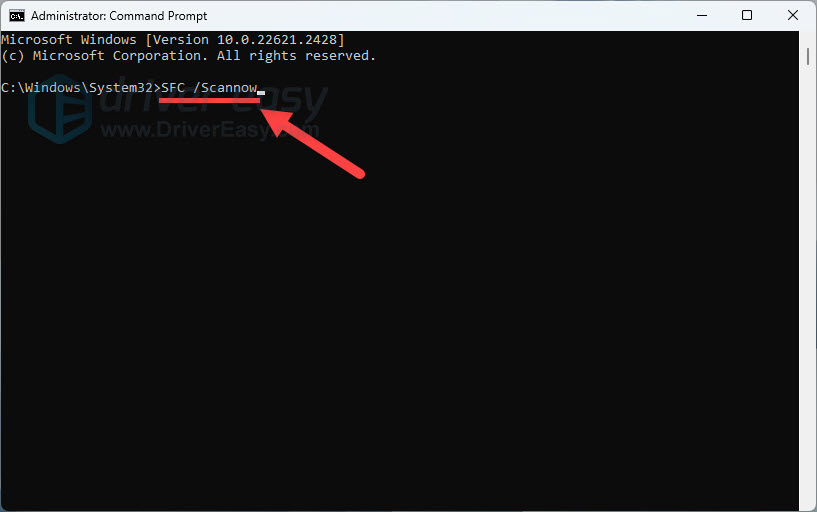
- It’ll take some time for the SFC to repair the corrupted system files if it detects any.
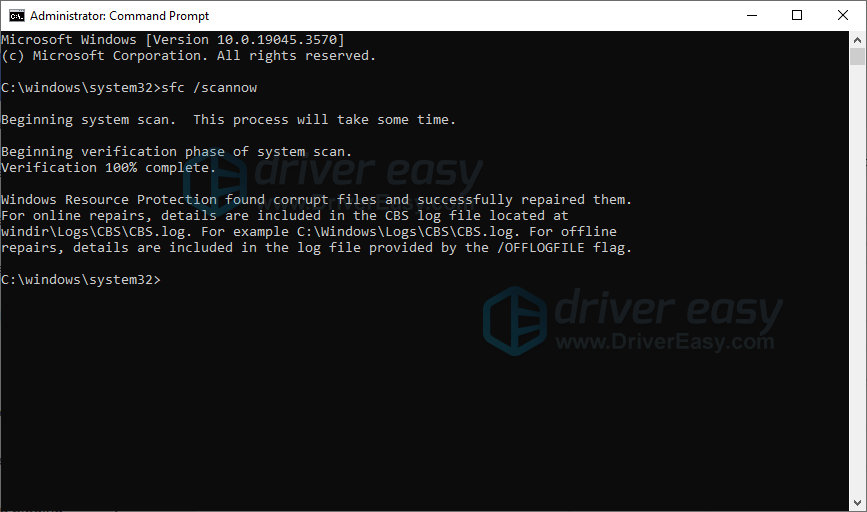
- When the process is completed, reboot your computer and test if the Failed to play test tone issue still exists. If the problem remains, please move on.
Solution 4: Change the Sample Rate
Changing the sample rate might fix your problem. To do so:
- On your keyboard, press the Windows logo key and R at the same time. Type in mmsys.cpl and press Enter.
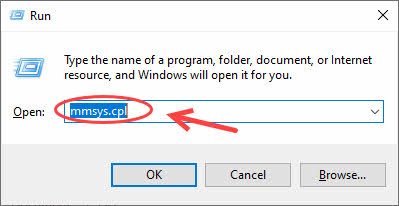
- Navigate to the Playback tab. Right-click your default sound device here and choose Properties.
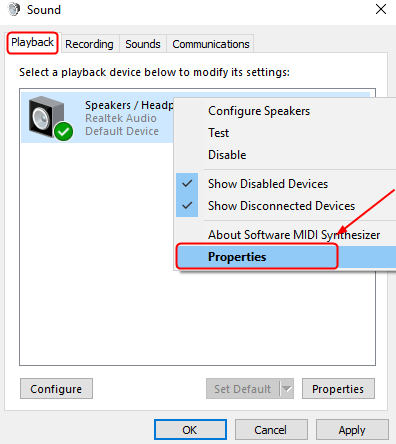
- Click Advanced tab. You may see the sample rate is 16 bit, 44100 Hz by default. Change it to another sample such as 16 bit, 48000 Hz. Click Apply button and see if the problem persists.
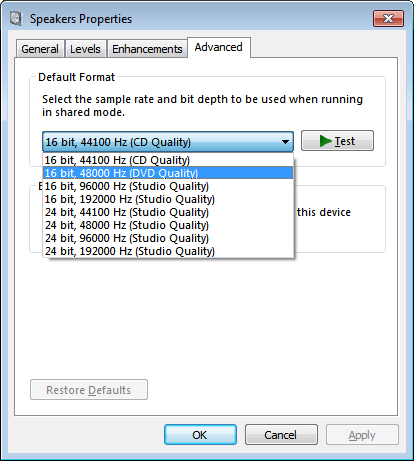
- If the sample rate is not set in default, click Restore Defaults and test if the sound’s back.
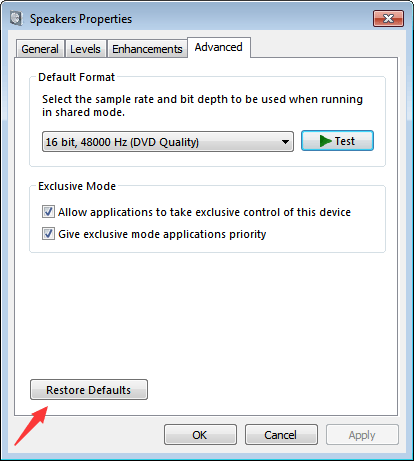
- If the Failed to play test tone error still persists, please move on to the next fix below.
Solution 5: Disable Audio Enhancements
Audio enhancement packages are aimed at enhancing your audio performance. But this feature can sometimes cause some problems. When you see the Failed to play test tone error, disabling audio enhancements may work. Here’s how to do this:
- On your keyboard, press the Windows logo key and R at the same time. Type in mmsys.cpl and press Enter.

- Navigate to the Playback tab. Right-click your default sound device here and choose Properties.

- Navigate to the Enhancements tab, then tick the box for Disable all sound effects. Then click OK to save the change.
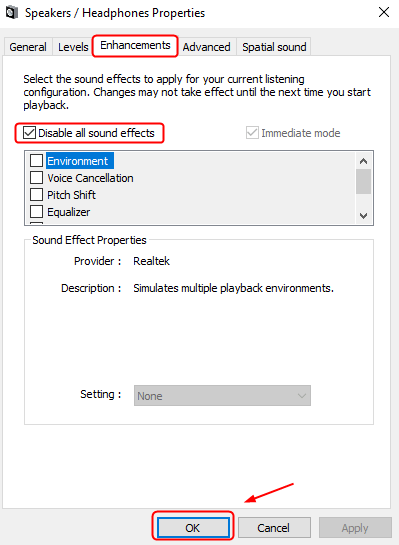
- For some sound cards, the options may differ. So you can try to see if there’s an Advanced tab, where you can untick the box for Enable audio enhancements.
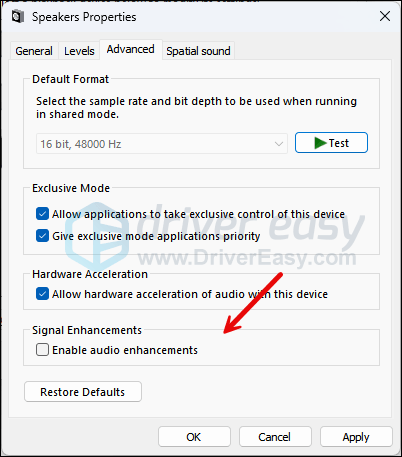
Now do a test to check if disabling audio enhancements helped you solve the issues. If not, please move on.
Solution 6: Reinstall Audio Drivers
The problem might also be caused by corrupted drivers, so try reinstalling the audio driver and see if the problem resolves. To do so:
- On your keyboard, press the Windows key and the R key at the same time, then type devmgmt.msc and hit Enter.

- Double-click to expand the Sound, video and game controllers category, then right-click your sound card and select Uninstall device.
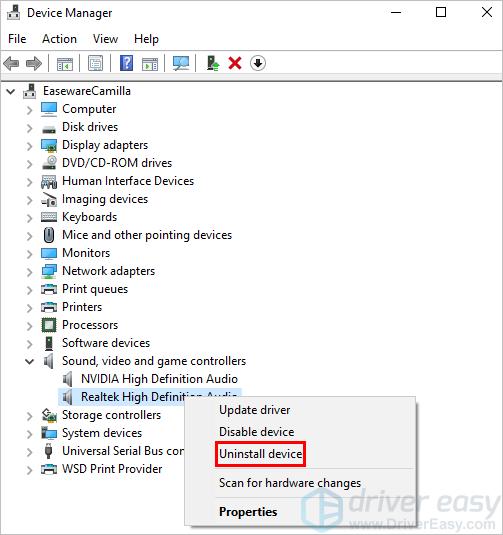
- Tick the box for Delete the driver software for this device if you’re on Windows 10, 8.1 and 7.
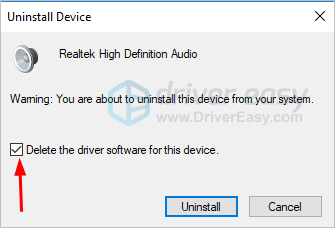
- Tick the box for Attempt to remove the driver for this device and click Uninstall if you’re on Windows 11.
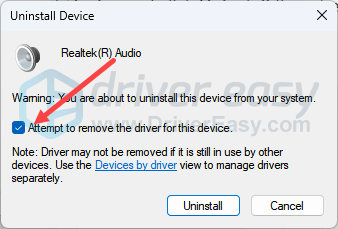
- Restart your computer for the last working driver to be installed by Windows.
If the problem persists, try downloading and installing the most recent drivers from the manufacturer’s website.
Use Driver Easy to Help Update the Audio Driver Automatically
If you don’t have the time, patience or computer skills to update the audio driver manually, you can do it automatically with Driver Easy.
Driver Easy will automatically recognize your system and find the correct drivers for it. You don’t need to know exactly what system your computer is running, you don’t need to risk downloading and installing the wrong driver, and you don’t need to worry about making a mistake when installing.
You can update your drivers automatically with either the 7 days free trial or the Pro version of Driver Easy. It takes just 2 clicks, and you get full support and a 30-day money-back guarantee with the Pro version:
- Download and install Driver Easy.
- Run Driver Easy and click the Scan Now button. Driver Easy will then scan your computer and detect any problem drivers.
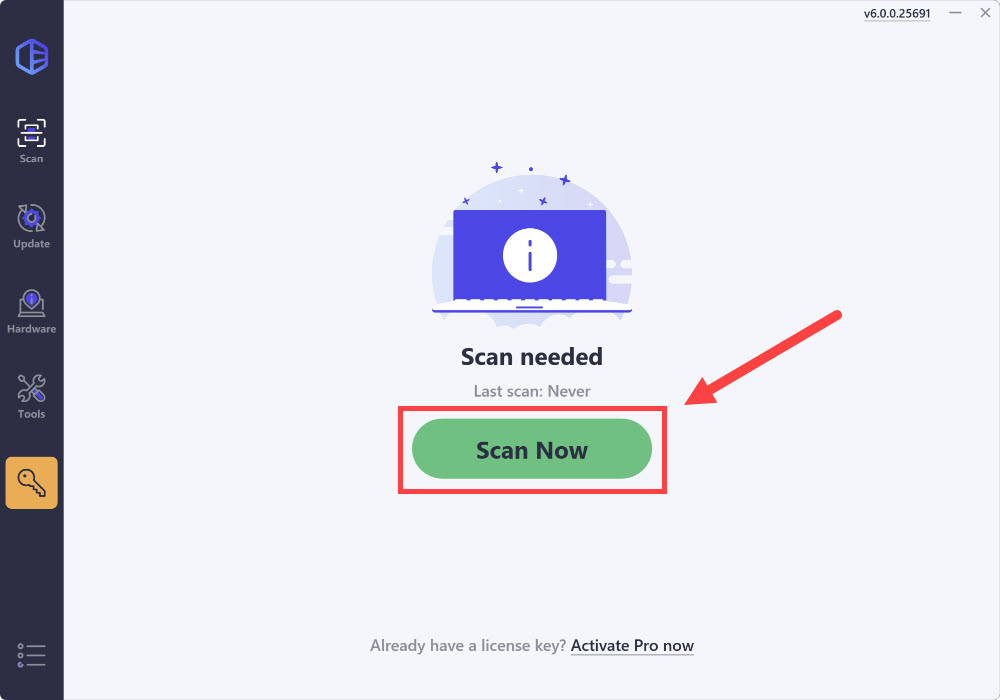
- Click the Activate & Update button next to the flagged device to automatically download and install the correct version of this driver.
Or click Update All to automatically download and install the correct version of all the drivers that are missing or out of date on your system (You’ll need the Pro version for this – when you select Update All, you’ll get a prompt to upgrade. If you’re not prepared to purchase the Pro version yet, Driver Easy provides a 7-day trial at no cost, granting access to all Pro features like fast downloads and easy installation. No charges will occur until after your 7-day trial period ends.)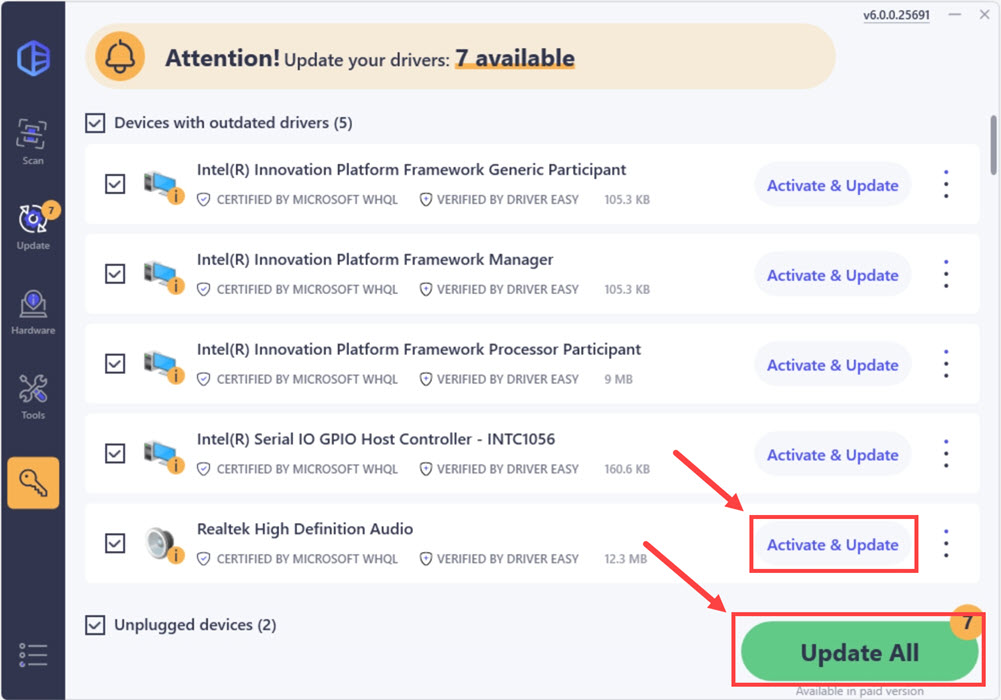
- After updating, restart your computer to take effect.
Hopefully you find this article helpful. If you have any questions, ideas or suggestions, feel free to leave a comment below.





